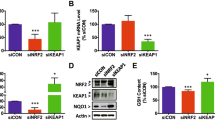Abstract
Biomarkers for early detection of toxicity hold the promise of improving the failure rates in drug development. In the present study, gene expression levels were measured using full-genome RAE230 version 2 Affymetrix GeneChips on rat liver tissue 48 h after administration of six different compounds, three toxins (ANIT, DMN and NMF) and three non-toxins (Caeruelein, Dinitrophenol and Rosiglitazone). We identified three gene transcripts with exceptional predictive performance towards liver toxicity and/or changes in histopathology. The three genes were: glucokinase regulatory protein (GCKR), ornithine aminotransferase (OAT) and Cytochrome P450, subfamily IIC (mephenytoin 4-hydroxylase) (Cyp2C29). RT-PCR for these three genes was performed and four additional compounds were included for validation. The quantitative RT-PCR analysis confirmed the findings based on the microarray data and using the three genes a classification rate of 55 of 57 samples was achieved for the classification of not toxic versus toxic. The single most promising biomarker (OAT) alone resulted in a surprisingly 100% correctly classified samples. OAT has not previously been linked to toxicity and cell death in the literature and the novel finding represents a putative hepatotoxicity biomarker.



Similar content being viewed by others
Abbreviations
- Ac:
-
Acivicin
- ANIT:
-
α-Naftylisothiocyanate
- At:
-
Aflatoxin
- BHT:
-
Butylated hydroxytoluene
- BS:
-
Buthinionine sulphoxide
- Ca:
-
Caeruelein
- Con:
-
Control (untreated) animal
- Cyp2C:
-
Cytochrome P450, family 2, subfamily C
- DMF:
-
Dimethylformamide
- DMN:
-
Dimethylnitrosamine
- DNP:
-
Dinitrophenol
- Fmo1:
-
Flavin containing monooxygenase 1
- GCKR:
-
Glucokinase regulatory protein
- KNN:
-
K-nearest neighbor
- NMF:
-
N-methylformamide
- OAT:
-
Ornithine aminotransferase
- Ro:
-
Rosiglitazone
References
Arden C, Baltrusch S, Agius L (2006) Glucokinase regulatory protein is associated with mitochondria in hepatocytes. FEBS Lett 580(8):2065–2070
Batusic DS, Cimica V, Chen Y, Tron K, Hollemann T, Pieler T, Ramadori G (2005) Identification of genes specific to "oval cells" in the rat 2-acetylaminofluorene/partial hepatectomy model. Histochem Cell Biol 124(3–4):245–260
Burczynski ME, McMillian M, Ciervo J, Li L, Parker JB, Dunn RT, Hicken S, Farr S, Johnson MD (2000) Toxicogenomics-based discrimination of toxic mechanism in HepG2 human hepatoma cells. Toxicol Sci 58(2):399–415
Bushel PR, Hamadeh HK, Bennett L, Green J, Ableson A, Misener S, Afshari CA, Paules RS (2002) Computational selection of distinct class- and subclass-specific gene expression signatures. J Biomed Inform 35(3):160–170
Chen JJ, Delongchamp RR, Tsai CA, Hsueh HM, Sistare F, Thompson KL, Desai VG, Fuscoe JC (2004) Analysis of variance components in gene expression data. Bioinformatics 20(9):1436–1446
de la Iglesia N, Mukhtar M, Seoane J, Guinovart JJ, Agius L (2000) The role of the regulatory protein of glucokinase in the glucose sensory mechanism of the hepatocyte. J Biol Chem 275(14):10597–10603
Farr S, Dunn RT (1999) Concise review: gene expression applied to toxicology. Toxicol Sci 50(1):1–9
Gautier L, Cope L, Bolstad BM, Irizarry RA (2004) affy–analysis of Affymetrix GeneChip data at the probe level. Bioinformatics 20(3):307–315
Gunther EC, Gerwien RW, Bento P, Heyes MP, Stone DJ (2003) Prediction of clinical drug efficacy by classification of drug—induced genomic expression profiles in vitro. Society for Neuroscience Abstract Viewer and Itinerary Planner 2003, Abstract-2003
Hamadeh HK, Bushel PR, Jayadev S, DiSorbo O, Bennett L, Li L, Tennant R, Stoll R, Barrett JC, Paules RS, Blanchard K, Afshari CA (2002) Prediction of compound signature using high density gene expression profiling. Toxicol Sci 67(2):232–240
Heinloth AN, Irwin RD, Boorman GA, Nettesheim P, Fannin RD, Sieber SO, Snell ML, Tucker CJ, Li L, Travlos GS, Vansant G, Blackshear PE, Tennant RW, Cunningham ML, Paules RS (2004) Gene expression profiling of rat livers reveals indicators of potential adverse effects. Toxicol Sci 80(1):193–202
Huang Q, Jin X, Gaillard ET, Knight BL, Pack FD, Stoltz JH, Jayadev S, Blanchard KT (2004) Gene expression profiling reveals multiple toxicity endpoints induced by hepatotoxicants. Mutat Res 549(1–2):147–168
Johnson PH, Walker RP, Jones SW, Stephens K, Meurer J, Zajchowski DA, Luke MM, Eeckman F, Tan Y, Wong L, Parry G, Morgan TK, McCarrick MA, Monforte J (2002) Multiplex gene expression analysis for high-throughput drug discovery: screening and analysis of compounds affecting genes overexpressed in cancer cells. Mol Cancer Ther 1(14):1293–1304
Kier LD, Neft R, Tang L, Suizu R, Cook T, Onsurez K, Tiegler K, Sakai Y, Ortiz M, Nolan T, Sankar U, Li AP (2004) Applications of microarrays with toxicologically relevant genes (tox genes) for the evaluation of chemical toxicants in Sprague-Dawley rats in vivo and human hepatocytes in vitro. Mutat Res 549(1–2):101–113
Lindon JC, Keun HC, Ebbels TMD, Pearce JMT, Holmes E, Nicholson JK (2005) The consortium for metabonomic toxicology (COMET): aims, activities and achievements. Pharmacogenomics 6(7):691–699
Morgan ET (2001) Regulation of cytochrome P450 by inflammatory mediators: why and how? Drug Metabo Dispos 29(3):207–212
Mueckler MM, Pitot HC (1985) Sequence of the precursor to rat ornithine aminotransferase deduced from a cDNA clone. J Biol Chem 260(24):12993–12997
Raghavan N, Amaratunga D, Nie AY, McMillian M (2005) Class prediction in toxicogenomics. J Biopharm Stat 15(2):327–341
Shi LM, Tong WD, Goodsaid F, Frueh FW, Fang H, Han T, Fuscoe JC, Casciano DA (2004) QA/QC: challenges and pitfalls facing the microarray community and regulatory agencies. Expert Rev Mol Diagn 4(6):761–777
Waring JF, Cavet G, Jolly RA, McDowell J, Dai H, Ciurlionis R, Zhang C, Stoughton R, Lum P, Ferguson A, Roberts CJ, Ulrich RG (2003) Development of a DNA microarray for toxicology based on hepatotoxin-regulated sequences. EHP toxicogenomics 111(1T):53–60
Acknowledgments
I would like to thank the COMET I consortium for giving me access to the tissues analyzed in this study. Homepage of the COMET consortium: http://www.bc-comet.sk.med.ic.ac.uk/
I would also like to thank Anne-Marie Mølck from Novo Nordisk with help on toxicity, Nina Hagen for inputs on P450, Lene Normann Nielsen on help with the QPCR and Kristine Dahlin from DTU with assistance in the laboratory.
Author information
Authors and Affiliations
Corresponding author
Rights and permissions
About this article
Cite this article
Spicker, J.S., Pedersen, H.T., Nielsen, H.B. et al. Analysis of cell death inducing compounds. Arch Toxicol 81, 803–811 (2007). https://doi.org/10.1007/s00204-007-0207-4
Received:
Accepted:
Published:
Issue Date:
DOI: https://doi.org/10.1007/s00204-007-0207-4




